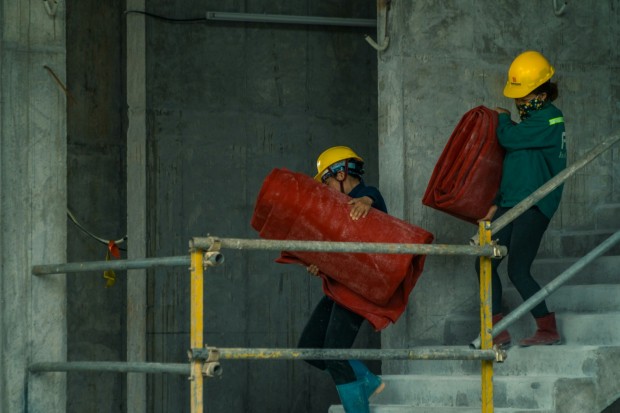Injuries and accidents often occur on construction sites. Yet, by familiarizing yourself with essential safety protocols and implementing proactive measures, you can significantly reduce the risk of accidents and injuries.

(Photo : Unsplash/Hoang Kim Hung )
1. Avoid Walking in Fall-Prone Areas
For those working in the construction sector, the possibility of an object falling from a height might lead to accidents and injuries. Things like falling tools, various kinds of building materials, or even pieces of scaffolding can all be potential causes. The use of warning signs near areas where things may fall, such as scaffolding, wearing hard hats, and avoiding wandering where objects may fall, help limit the number of injuries caused by falling objects. Accidents involving falling objects are among the four categories of injuries that can result in fatalities in the construction business. Some of the injuries that can happen from falling things and materials are cuts, while others are brain injuries.
2. Plan and Manage Hazard Risk
Before work begins, a certified safety professional should thoroughly inspect each working site or project to search for particular dangers. To address any hazards identified during this risk assessment, a comprehensive inventory of job-specific precautions should be compiled. Moreover, all personnel at the construction site must be duly informed about the potential dangers and instructed on appropriate safety protocols.
3. Use Equipment Properly
The safety features may cease functioning if utilized contrary to the manufacturer's instructions. In the event of injury, you or an employee will be excluded from filing a defective product liability claim. Thus, inappropriate equipment usage can also damage the equipment, which may lead to injuries caused by the device.
4. Always Wear Safety Gear
Wearing safety gear, often known as personal protective equipment, is essential on construction sites since accidents can still occur despite the implementation of safety precautions. Hard helmets, steel-toed boots, hearing protection, eye protection, and harnesses are the fundamental pieces of safety equipment required for most construction sites. Additionally, wearing gloves and masks in certain circumstances can be necessary.
Also Read: Sustainable Concrete Repurposing and Fire Safety Featured at Concrete Expo UK
5. Schedule Regular Safety Meetings
During safety meetings, various safety practices can be reviewed, and newly hired workers can be informed of the rules and regulations pertaining to safety. Leaders and supervisors can be notified of every modification, and they can make suggestions for improvements depending on what is happening on the project site.
6. Take Regular Breaks
Regular breaks, including lunch breaks, should be required. Some employees may desire to work through their breaks or meals to reduce the workday or earn overtime. Nevertheless, weariness and a failure to drink enough water can both contribute to an increased risk of accidents on construction sites.
7. Check the Conditions of Tools
It is critical to thoroughly inspect the condition of all heavy tools and apparatus you intend to utilize in your work activities. Any malfunction or failure in its installation has the potential to result in an accident that results in significant injuries.
8. Demand Inspection of the Workplace
Verifying the condition of the construction site is equally crucial as ensuring the functionality of the tools and apparatus that will be utilized during the undertaking. Sometimes, the dire state of the ground and other factors can also produce significant mishaps that can put the worker's life in danger.
Related Article: How to Handle Construction Delays: Strategies and Solutions







